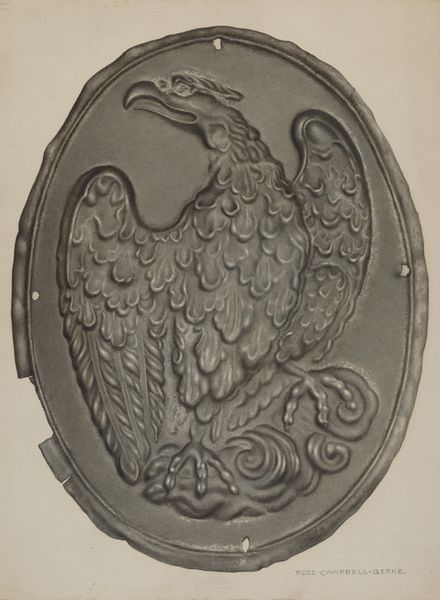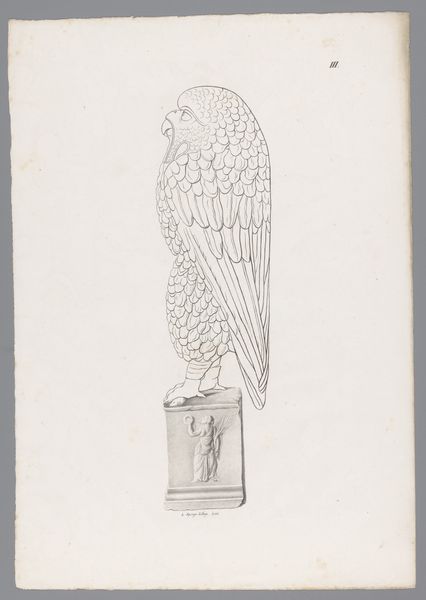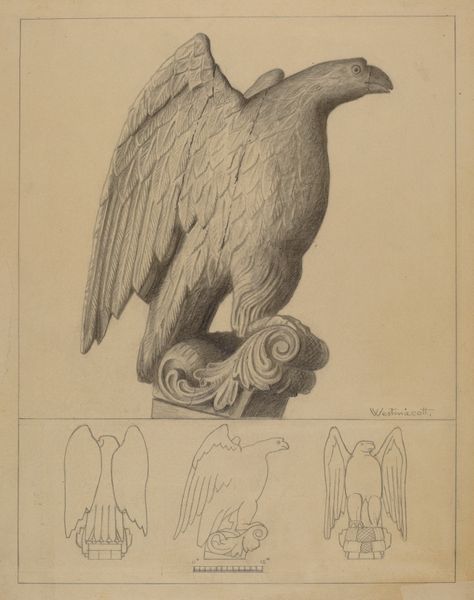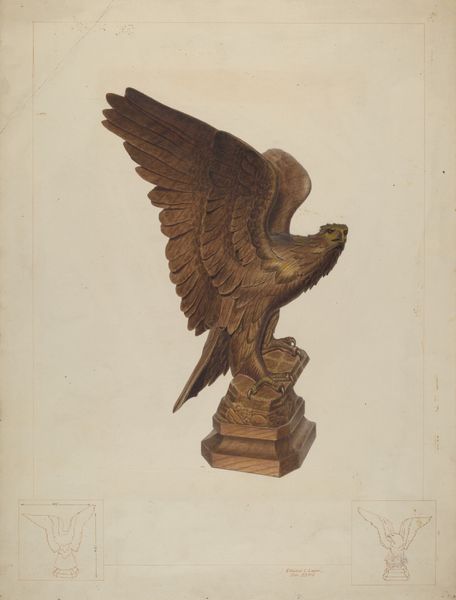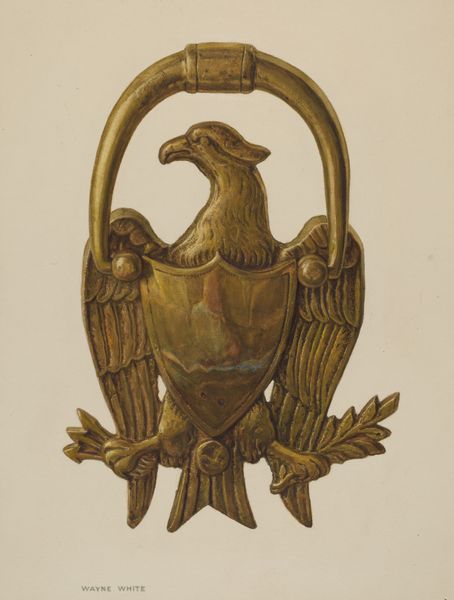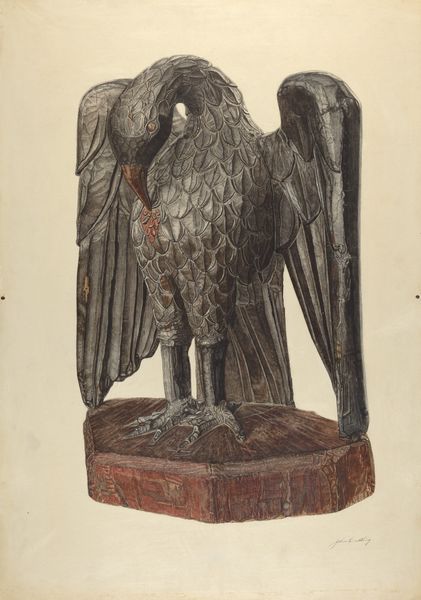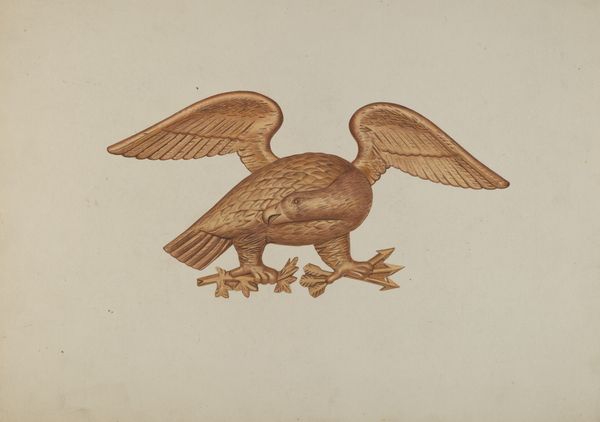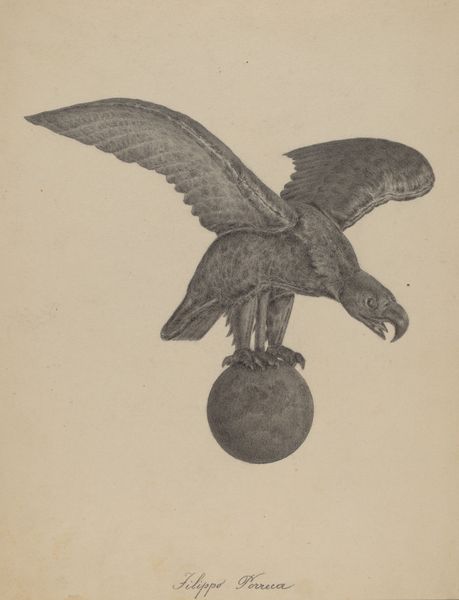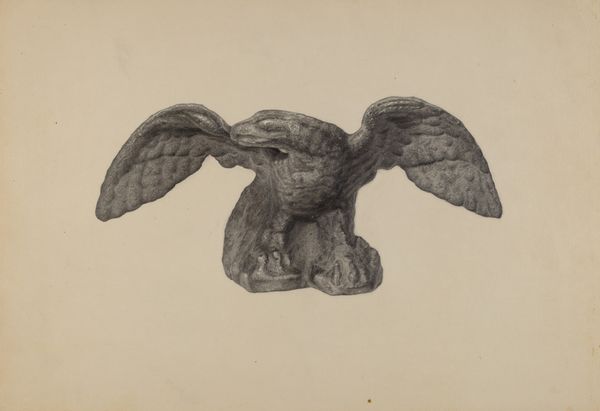
drawing, pencil
#
art-deco
#
drawing
#
pencil drawing
#
geometric
#
pencil
Dimensions: overall: 28.8 x 22.8 cm (11 5/16 x 9 in.) Original IAD Object: 12 1/4" high; 9" wide
Copyright: National Gallery of Art: CC0 1.0
Editor: Here we have Herman Bader's pencil drawing, "Swing Torch," created around 1936. It features this stylized eagle design. I find the geometric precision quite striking; it's simple, yet majestic. What do you see in this piece from a historical perspective? Curator: Well, immediately, I consider the time. The 1930s were fraught with social and political tension. We see this geometric, stylized rendering of an eagle—a powerful, even nationalistic symbol. Ask yourself, how would an object like this function in the public sphere? Editor: What do you mean by “function?" Curator: Consider the context in which an image, like this drawing for a “swing torch”, might be displayed, perhaps in a public building. It represents authority, strength, and even the idealized spirit of America in the years leading up to the Second World War. Bader’s design choices - the smooth surfaces, the lack of specific detail – amplify these readings, no? It's very streamlined, almost machine-like. Editor: That makes sense. So, you're saying the image wasn't just decorative; it carried a message? Curator: Precisely. Visual culture is never neutral. How do you think the public might have reacted to a symbolic object with strong political undertones such as this, given the social and political conditions during the interwar? What could be interpreted from a drawing as 'innocent' as this in the wrong hand? Editor: I never thought of art deco as potentially propagandistic, but I see your point. It’s like, it looks nice, but what does it *mean*? It is not the same as a literal image like many posters from the world wars. This torch’s shape insinuates the idea with sophistication, almost too good to be associated with the negative connotations of the political contexts of the period. Curator: That tension between form and meaning is crucial. That makes this all the more significant. Editor: I'll definitely view other artworks from this period with a more critical eye now, considering how they might be contributing to broader societal narratives.
Comments
No comments
Be the first to comment and join the conversation on the ultimate creative platform.
